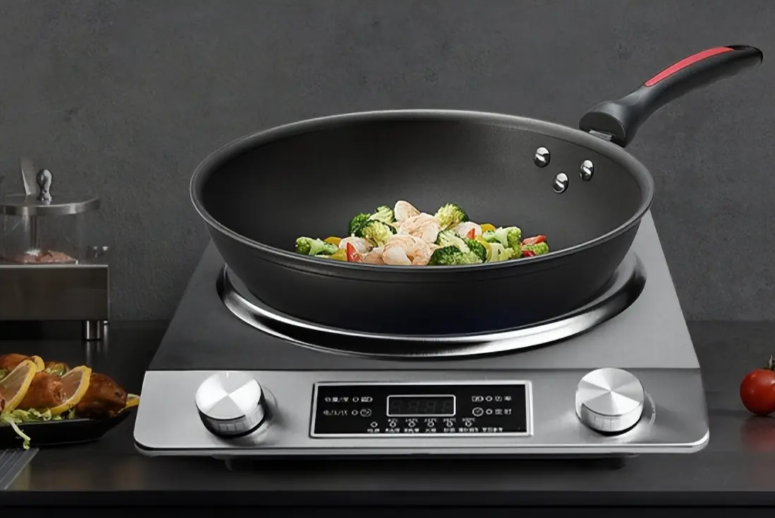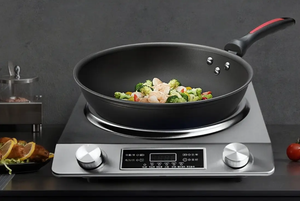
Electromagnetic cooker inspection method inspection procedure
An electromagnetic cooker, as a modern kitchen appliance that operates based on the principle of electromagnetic induction, has been popular worldwide since its emergence in the 20th century, thanks to its features of high efficiency, energy conservation, safety and convenience. The quality and safety of electromagnetic cookers directly affect the user experience and life safety. This article will deeply analyze the factory inspection and quality control process, key points and testing standards of electromagnetic cookers, providing comprehensive reference guidelines for purchasers, quality inspectors and manufacturers.
I. Basic Knowledge of Induction Cookers and Preparations Before Inspection
(1) Working Principle and Characteristics of Induction Cookers
Induction cookers operate based on the phenomenon of electromagnetic induction. They use alternating current passing through coils to generate an alternating magnetic field, causing a vortex current to be generated within the conductive material in the cooker. The heat effect of this vortex current is utilized for heating. This heating method has high thermal efficiency and good safety, but it also has specific requirements for the material of the cookware.
(2) Preparations before Inspection
Technical document review: Verify product specifications, circuit diagrams, quality control plans, and certification certificates for key components
Verification standard confirmation: Clearly specify the applicable national standards (GB 4706.1, GB 4706.29, GB 21456-2008, etc.)
Calibration of testing equipment: Ensure that power meters, oscilloscopes, ground resistance testers, etc. are within the calibration validity period.
Sampling plan formulation: Based on the batch size, determine the sampling quantity and acceptance criteria in accordance with GB/T 2828.1
II. Key Points for Factory Audit of Electromagnetic Stoves
(1) Quality Management System Audit
Check whether the factory has established a complete quality management system (ISO9001 certification)
Review the supplier management procedures, especially the supplier evaluation records for key components such as IGBT and microcrystalline glass panels.
Review the production process control documents and their implementation status, with a particular focus on key procedures such as SMT soldering and coil assembly.
Evaluate the effectiveness of the control procedures for non-conforming products and the corrective and preventive measures.
(2) Key points of on-site production inspection
Incoming material inspection area (IQC): Review the inspection records of critical components (such as IGBT, bridge rectifier, thermistors, microcrystalline glass panels, etc.)
Production line layout: Evaluate the effectiveness of anti-static measures and the completeness of grounding systems
Key process control: Focus on processes such as coil drum installation, power debugging, and safety compliance testing.
Aging test area: Check whether the aging test time, temperature and load comply with the process requirements.
Finished Product Inspection Area (FQC): Ensure that all inspection equipment is complete and functioning properly, and that the inspection records are complete and traceable.
III. Inspection Standards and Methods for Electromagnetic Cookers
(1) Safety Performance Inspection (Compulsory Inspection Items)
Electrical Strength Test: According to the GB4706.29 standard, apply a 1250V/1min voltage between the energized components and the casing, and there should be no breakdown or flashover phenomenon.
Ground continuity test: The resistance between the grounding terminal and the grounding metal component should not exceed 0.1Ω.
Leakage current test: The leakage current value does not exceed 0.75mA
Input power deviation: The deviation between the actual power and the rated power should be within the range of +5% to -10%.
Abnormal operation test: Simulate non-normal operating conditions (such as no-load, overloading, etc.) to verify the reliability of protection functions.
(2) Structural and Material Inspection
Inspection of microcrystalline glass panels:
High-temperature resistance test (rapid cooling to 400℃ without cracking)
Surface flatness inspection (measured gap ≤ 0.2mm)
Impact resistance test (steel ball impact without fracture)
Structural safety inspection:
The edges are not sharp and pointed, preventing users from getting scratched.
The power cord fixing device meets the requirements of the tensile test (30N tension for 25 times, displacement ≤ 2mm)
The heat dissipation holes are designed reasonably and meet the requirements for preventing electric shock.
(III) Performance Test Items
Thermal Efficiency Test: Performed in accordance with the standard method specified in GB 21456-2008, with a thermal efficiency of no less than 86%
Temperature control accuracy: The deviation between each temperature setting and the controlled temperature is ≤ ±10%
Power stability: Under the rated voltage, the power fluctuation range is ≤ ±5%
Noise test: At a distance of 50 cm from the front of the electric cooker, the noise is ≤ 55 dB
Electromagnetic compatibility test: Conductive interference and radiated interference meet the limit requirements of GB 4824.
(4) Environmental Adaptability Test
High and Low Temperature Working Test: Can operate normally in an environment ranging from -5℃ to 40℃.
Humidity and heat test: The insulation performance meets the requirements under a temperature of 40℃ and a relative humidity of 93%.
Voltage fluctuation test: It can operate stably within the range of ±10% of the rated voltage.
Durability test: Operates continuously for 1000 hours, with the main performance indicators degrading by no more than 5%
IV. Common Quality Issues of Induction Cookers and Key Inspection Points
(1) Common Non-conformities
Electrical Safety: Insufficient electrical clearance and creepage distance, unreliable grounding measures
Performance category: Failure to meet thermal efficiency standards, excessive power deviation, and inaccurate temperature control.
Structural category: The panel lacks impact resistance and the heat dissipation design is unreasonable.
EMC category: Exceeds electromagnetic interference standards, poor anti-interference capability
Sign description category: Inconsistent sign standards, incomplete usage instructions
(2) Control of High-Risk Aspects
Component Procurement: Thoroughly review the qualifications of suppliers for key components such as IGBT and microcrystalline glass panels.
PCB board production: Strengthen control over solder paste printing, surface mounting, and reflow soldering processes
Assembly process: Pay close attention to monitoring the installation of coil discs, the application of thermal paste, and the torque of screws, etc.
Factory inspection: Ensure that each product passes the safety performance and basic function tests.
V. Inspection Rules and Sampling Plans for Electromagnetic Cookers
(1) Factory Inspection
This shall be carried out in accordance with the GB/T 2828.1 standard. A general inspection level II shall be adopted. The AQL value shall be determined based on the importance of the product:
Critical defect: AQL = 0.1%
Defects: AQL = 1.0%
Minor defect: AQL = 2.5%
(2) Type Testing
Type testing must be conducted under the following circumstances:
Trial production of new products or trial production for the transfer of old products to another factory for quality assessment
After the official production begins, if there are significant changes in the structure, materials or processes
During normal production, inspections are conducted regularly (at least once a year)
The production resumed after a long period of suspension.
The inspection results upon leaving the factory show a significant difference from those of the previous type test.
The national quality supervision authority has put forward requirements for type testing.
VI. Requirements for Marking, Packaging and Storage
(1) Requirements for Product Marking
Rated voltage, rated frequency, rated input power
Manufacturer's name or trademark
Model Specifications
Waterproof grade marking (if any)
Energy efficiency label (in compliance with GB 21456-2008 requirements)
Warning signs (such as prompts to prevent misuse)
(2) Key points of packaging inspection
The packaging materials should comply with the requirements of GB/T 1019 and possess sufficient buffering protection.
The packaging labels are consistent with the actual product information.
The accompanying documents are complete (the user manual, the warranty card, and the certificate of conformity)
Through transportation simulation tests (vibration, drop, stacking tests)
(III) Storage and Transportation Management
Warehouse environment requirements: Well-ventilated and dry, relative humidity ≤ 85%
Stacking requirements: At least 30cm away from the wall, at least 15cm away from the ground, and the number of stacking layers shall not exceed the specified limit.
Transport protection: Measures for preventing moisture, shock and damage during transportation are in place.
Shelf life: Under the conditions of proper storage, the shelf life of the product is generally two years.
VII. Conclusion
The quality inspection of induction cookers is a comprehensive engineering involving multiple aspects such as electrical safety, electromagnetic compatibility, and thermal performance. The inspection personnel need to have a thorough understanding of product standards, inspection methods, and common quality issues in order to effectively control product quality. Manufacturing enterprises should establish a complete quality management system, especially strengthening control in key component management, stable production processes, and management of inspection equipment, to ensure that the products meet national standards and customer requirements.
By conducting rigorous supplier audits, controlling the production process and conducting final product inspections, the quality risks of induction cookers can be effectively reduced, consumer rights can be guaranteed, and the market competitiveness of enterprises can be enhanced. The inspection methods and standards for induction cookers provided in this article are expected to offer practical guidance for quality management in quality inspection personnel, purchasers and production enterprises.
Share this product

Electromagnetic cooker inspection method inspection procedure
As a kitchen appliance, the electromagnetic cooker has gained worldwide popularity for its high efficiency, safety and convenience.
